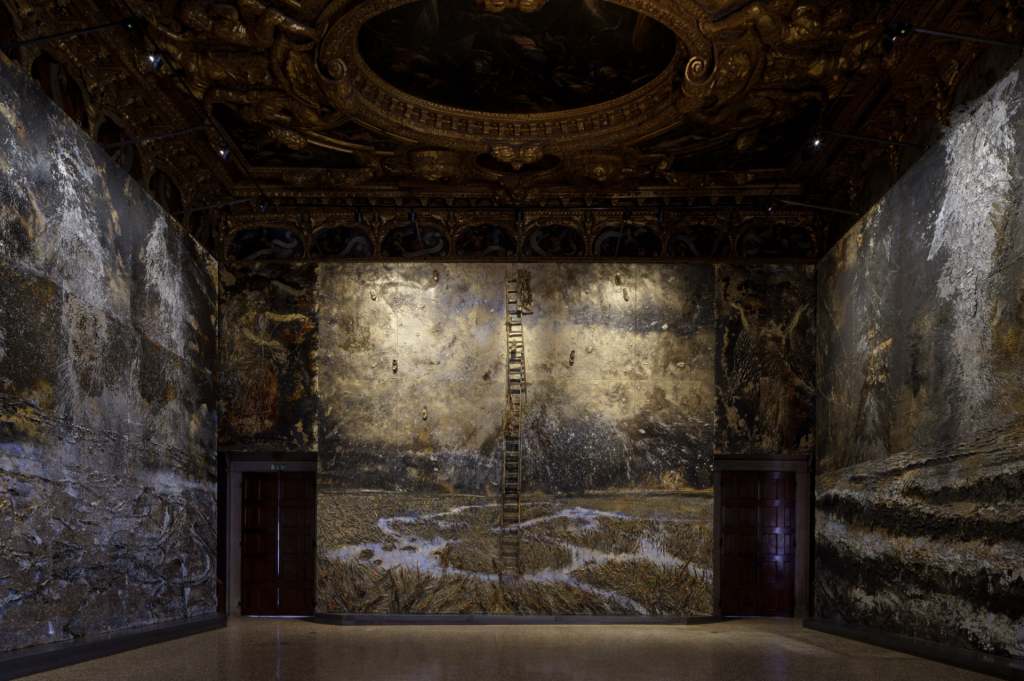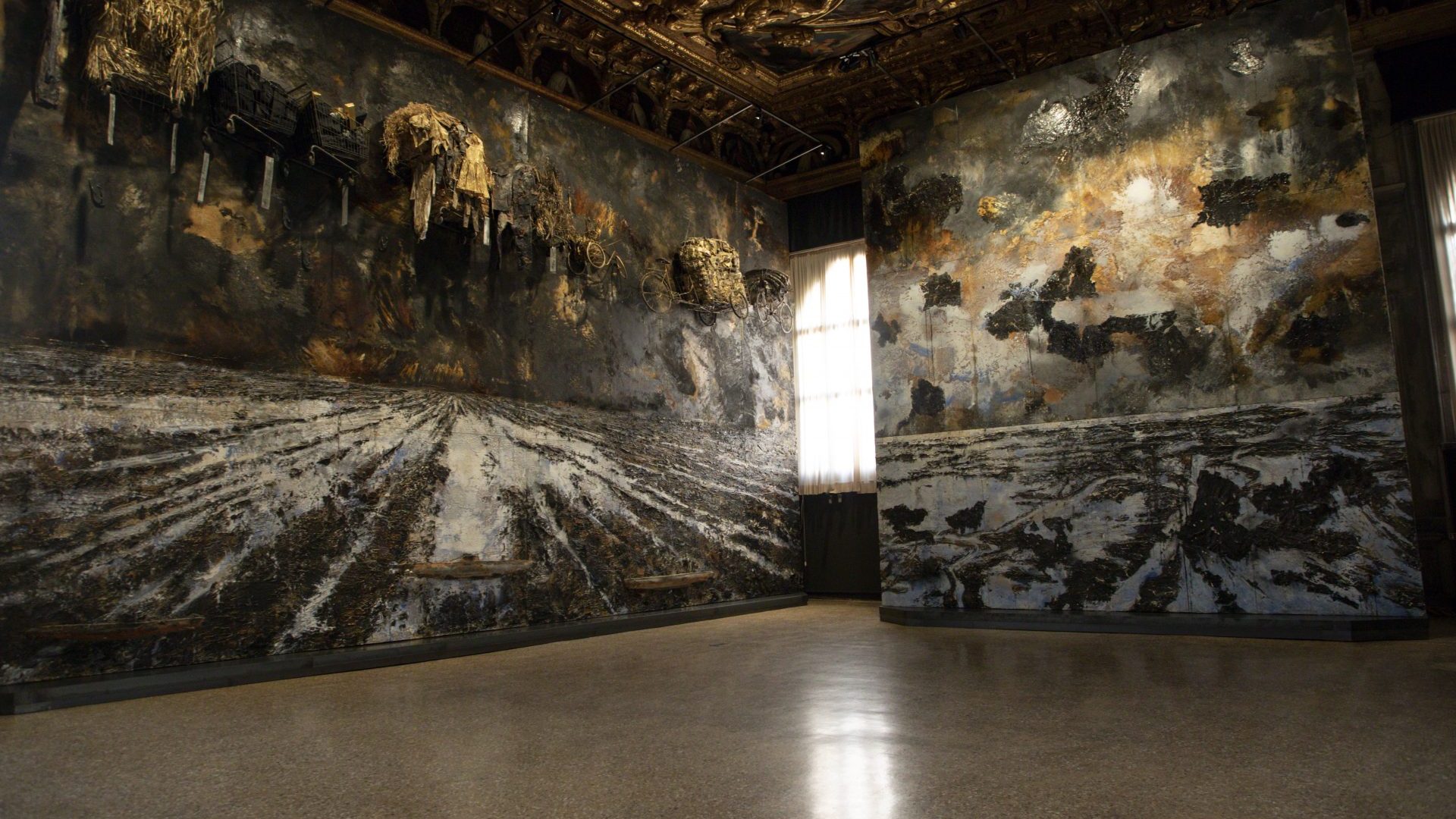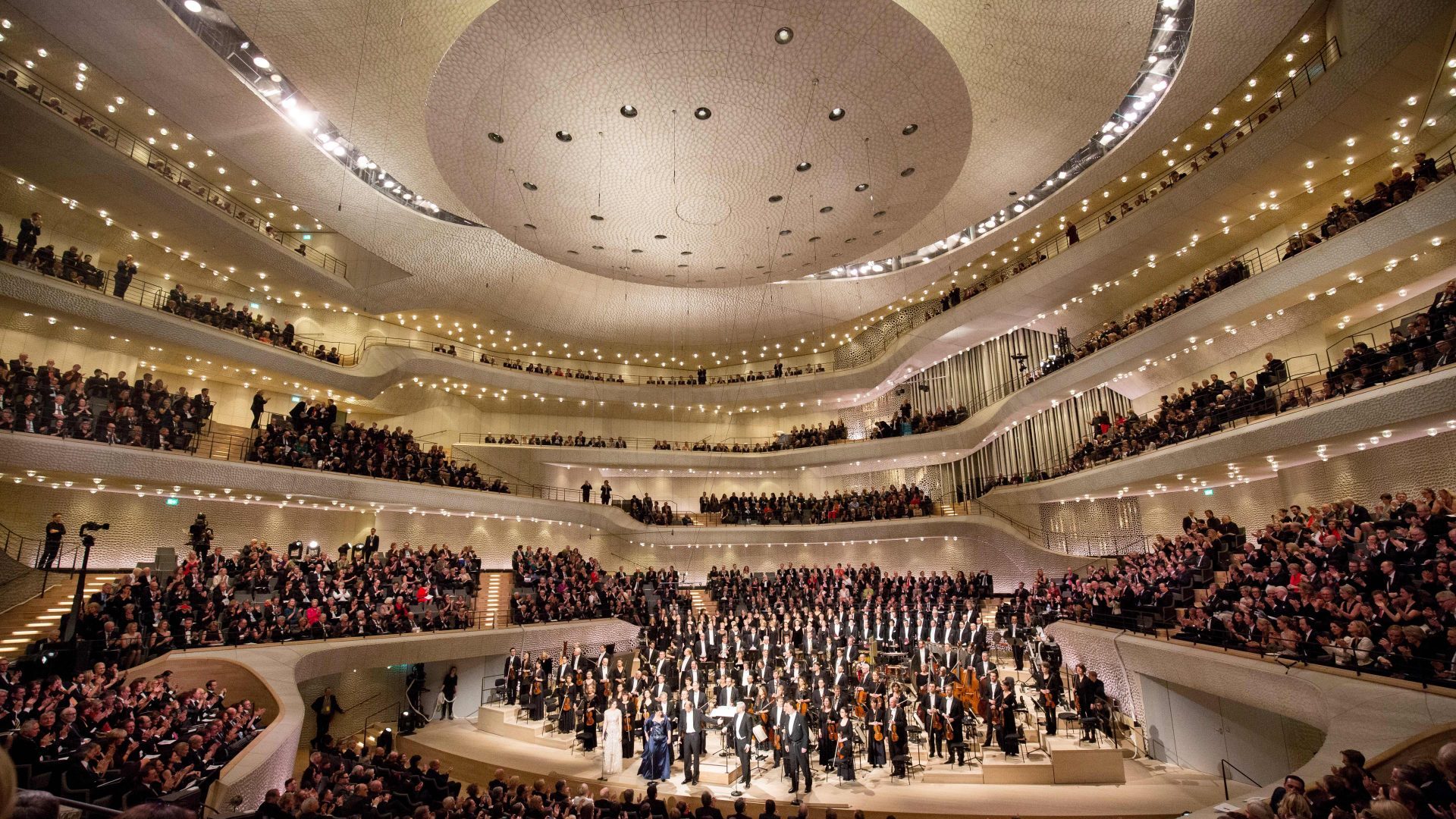In 1577, fire ripped through a magnificent library of the Palazzo Ducale – the Doge’s Palace – in Venice, incinerating books and melting lead from the roof, which then oozed down lavishly decorated walls. The Palace’s Chamber of the Great Council was destroyed, and with it works by the likes of Titian, Gentile da Fabriano, Pisanello, Alvise Vivarini, Giovanni Bellini, Pordenone and Vittore Carpaccio.
Venice, the city grown out of a flight from barbarism to inhospitable marshland, is accustomed to making a triumph out of adversity. It did so
back then, commissioning for the palace’s grand Sala dello Scrutinio new work celebrating military victories over rival nations, portraits of the doges and a Last Judgement by Jacopo Palma il Giovane.
Now all of this too has disappeared, albeit temporarily, with the installation of an overwhelming cycle of work by the great German artist Anselm Kiefer.
Its title, Questi scritti, quando verranno bruciati, daranno finalmente un po’ di luce – “These writings, when burned, will finally cast a little light” – are words taken from the writing of the Venetian philosopher Andrea Emo, to whose work the artist was introduced five years ago, he explains, and by which he was “stupefied”.
No longer perturbed by the impermanence of things, Kiefer plans no particular future for the 800 square metres of work once it makes way for the palace’s 16th-century masterpieces once more, even eyeing up the engulfing waters that lap almost to the walls of the palace. “No one can prevent me from sinking all the pictures into the lagoon after the exhibition,” he says.
And what pictures. Over the course of a 50-year career, Kiefer has developed a powerful visual vocabulary, his often vast canvases thick with paint and encrusted with natural and man-made objects: sticks, stalks, clothing, ironmongery. Human figures as such do not appear in the new cycle, but humanity is absolutely everywhere.

While there is no strict narrative in these floor-to-ceiling walls of art, the theme of loss and destruction, retrieval and resolution are vividly illustrated, and echo scenes in the permanent collection that is now temporarily out of sight.
Below a depiction of the palace itself consumed by fire, rough uniforms on skeletal clothes hangers step forward from rows of tombs. They fit men and boys, and are as thickly encrusted as are the staithes of the Grand Canal outside with barnacles.
On the opposite wall, the coffin of Venice’s patron saint, St Mark, is empty. At the end of the room, a rickety procession of bicycles and supermarket trolleys is trying to head for the light. They are piled high with personal possessions and means of survival. Turn on any news bulletin and you will see the same tragic convoy.
Kiefer’s commission predated the pandemic and the Russian invasion of Ukraine, but like all the best creativity, it resonates in a changing landscape.
Venice is no stranger to pestilence: Santa Maria della Salute across the water was built to deliver the city from the devastating plague of 1630-31, which wiped out about a third of the population of the city – 100,000 people in the heart of the city and across the lagoons. The international movement of people and goods is built into its architecture and economy, its trade once built on precious cloth and spices, now on tourism.
The great painting cycles of Italy celebrate either the elimination of threats to the Pope or state, or inspirational stories of the Holy Family, saints and martyrs. Kiefer’s Venice work is not overtly religious, but the idea of transcendence is here. On what in a church would be the altarpiece, three ladders reach one above the other to an unseen height, clothing discarded and tumbling to earth like the discarded mortal body of a soul in transit.
Earthly landscapes are scorched and scarred, and Kiefer grew up knowing about this desolation. In March 1945 he was born into an artistic household in Donaueschingen, then in West Germany, the home of a contemporary music festival that dates back 100 years.
At the University of Freiburg he initially studied languages and law, but went on to study art there and in Karlsruhe. His early work was photographic: he dressed in his father’s old uniform and posed in cities across Europe, to illustrate fascism’s assault on German culture. To this day the second world war casts a long shadow over work that is heavy with symbols of oppression
and loss.
In the 1990s his travels in Asia, Africa and the Americas fed his interest in both eastern and western philosophy. Today he lives and works in France. La Ribaute is a former silk factory on a 200-acre site near Barjac in the Cévennes. From this year onwards it is open to the public, from May to October. Here Kiefer creates work in a labyrinth, with the help of assistants. But, he maintains, he alone does all the painting.
Of the title of his Venice exhibition, he says, “What at first seems like a witty aperçu is more than that: it means that there is nothing eternal under the sun. We cannot do anything that would have eternal value. The only thing that is eternal is this striving. Which means that there is no such thing as a masterpiece that has survived the millennia.
“In the past, I was always in despair at not being able to create a ‘masterpiece’. I thought it was because of a lack of talent, but it is a fundamental principle: the goal is not the finished image, rather, it is the movement, the constant flow, the never-ending change. In front of my studio is a row of containers filled with paintings dating back to the 1960s, waiting to rise again…
“Like Andrea Emo’s writings given over to virtual fire, my paintings are subjected to an actual process of destruction: I actually burn them or put them outside, expose them to different weather conditions: heat, rain, snow. Only then do they become special, ie individual… The picture is a particular object, the work of a ‘master’, only if it is at the same time its negation.
“What remains is the recollection, the recollection of its manifold states. Recollection, then, creates only that which can be seen and that rises up from nothingness. There is nothing new in the world except in recollection.”
Anselm Keifer: Questi scritti, quando verranno bruciati, daranno finalmente un po’ di luce is at the Palazzo Ducale, Venice, until October 29. Guided tours of La Ribaute, the Eschaton-Anselm Kiefer Foundation in Barjac, France, last 150 minutes and are in French, German and English by turn, starting at 9.30am, Wednesday to Friday, until August 5, and from September 7 until the end of October
Claudia Pritchard writes about the visual arts, opera and classical music




